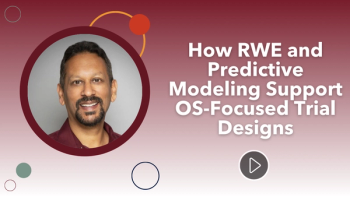
Pharma 2023: Unleash RWE Benefits Along the Value Chain
Panel discusses what real-world evidence—and related patient-reporting technology—need to achieve to better influence payer decision-making.
Moderator Catia Proenca, director in real-world solutions, Alira Health; Rolland Kacsoh, global product director, iron disorders and rare anemias, rare blood, early assets, Novo Nordisk; Omar Ali, visiting lecturer, value-based pricing and innovative contracting of new medicines, University of Portsmouth and former adviser for NICE adoption and impact program reference panel; and Gorana Capkun, global head, real-world evidence (RWE) analytics and enablement, Novartis, participated on the “Unleash RWE Benefits Along the Value Chain” panel at Pharma 2023 today in Barcelona.
Kacsoh noted that patient diaries could be used as RWE for quantifying a utility with the patient and the targets you will be targeting and doing your so-called payer research, already armed in advance of how much value you have with the patient and also the physician.
Ali shared that in his capacity with NICE, the health technology assessment (HTA) for using Botox for migraine, for example, showed that placebo saline offered the same efficacy data, specifically that the headache lasted one date. In examining patient diaries, the value story changed and the HTA dramatically altered their views. The diaries showed that while headache days were the same, the Botox treatment had significantly better duration time (not as long in the day) and the headache intensity was much lower.
“This was the first time patient diaries and PROs (patient-reported outcomes) were used in that context,” said Ali. However, he did note that because of these results, payers wanted patients to keep diaries while on the therapy. Patient groups were not thrilled, so the actual deployment was fraught with additional issues, but it did outline the value story.
Similarly, Capkun pointed out that the gap from marketing authorization in some countries can be anywhere from four months to 81 months. “To wait four years to get reimbursement and a patient go without a treatment is [untenable]," she said. What would help drugs get released earlier for reimbursement is RWE. Capkun believes payers are more ready to hear the value story, and it’s become more important for all stakeholders in decision-making to change.
Additionally, Kacsoh noted that at Novo Nordisk, the company works to ensure PROs are successfully implemented, and in the rare disease space, it has a unique setup for very early commercial or early assets—in the preclinicial stage. The strategy focuses on the whole patient journey, including market research/RWE very early on to reach patients and ensure that in the clinical trial the outcomes included are ones that matter to payers, and that utility is based on actual patient symptoms and treatment-addressed needs.
Calling it the “ICER in reverse” (referring to the Institute for Clinical and Economic Review) in very early development using this PRO information, pharma can calculate the value story and target additional unmet needs and the value around those needs. “In what ways [the disease] affects the patients and not waiting until a Phase III study and running it by KOLs or patient advocacy outreach because, while it may make sense, it’s probably too late,” noted Kacsoh.
Newsletter
Stay current in clinical research with Applied Clinical Trials, providing expert insights, regulatory updates, and practical strategies for successful clinical trial design and execution.




